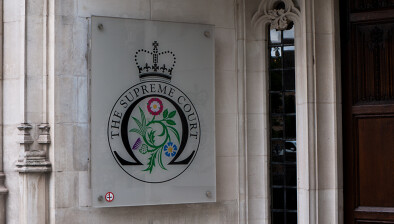Review: Linking industrial pollution to a cluster of serial killers

Robert Shiels reviews a new book linking industrial pollution to a cluster of serial killers.
Murderland, as a history of extreme crime in particular geographical areas of the United States of America, transcends true-crime voyeurism and noir mythology. Many of the individual criminals discussed in the book are very well-known.
It may seem odd, however, to read that in 1972 the city of El Paso and the State of Texas sued a smelting company for the damage caused by sulphur dioxide emissions from the latter’s industrial premises.
Documents from the company released for that litigation showed that between 1969 and 1971 more than 1,100 tons of lead, 560 tons of zinc, 12 tons of cadmium and more than one ton of arsenic had been emitted from the smokestack at the smelter in El Paso.
The industrial statistics for the Pacific Northwest, the State of Washington, were far worse and for many more years, and much of the early part of this book concerns the history of industry around Tacoma and resulting pollution over a wide area.
In the 1970s and 1980s, there was an uncanny explosion of serial rape and murder across the northwest region. Why were there so many serial killers and then a sudden decline in their epidemic of crime?
The author was born in 1961 in Tacoma and three men then living in the wider neighbourhood were Charles Manson, Ted Bundy and Gary Ridgway, who, acting separately, probably killed over 100 women and children.
It seems that Tacoma had “a record of extravagant deviance”, which seems to have fallen away after the closure of the smelter in 1985.
Comparably violent, but not as prolific, killers were active elsewhere in America, including El Paso, around the same time: the other individuals discussed were all killers born or living within the radius of smelter plumes.
The sustained point in the narrative, with a great deal of established fact, is that the poisoned emissions from smelters devastated the environment and blighted of health of local inhabitants, a few whom became serial killers.
The key question in all this is whether such industrial emissions, such as lead, creates criminals? Did a new strain of repetitively violent psychopaths emerge out of a seriously toxic landscape?
On the author’s explanation there was such a group, born around the 1940s who were most active in the 1970s and 1980s. There is medical evidence of a connection between the effect of the emissions and the resulting criminal behaviour, but it is rather understated by the author, it might be thought.
In 1984 one killer of 21 people, at a McDonald’s restaurant where 19 others were injured, in a random shooting was found at autopsy after his own death to have in his hair sample extraordinarily high levels of lead and cadmium.
His industrial employment had exposed him for many years to the fumes from cadmium which he had said previously was making him “crazy”.
Cadmium, like lead, is associated with violent behaviour. That followed from damage to the front cortex of the brain. Research more recently in 2005 to 2008 has re-emphasised the importance of the consequences of that brain damage.
Just as importantly, lead exposure in childhood is linked to brain volume loss when the children reached adulthood, and the effects are particularly notable in men. The greater the exposure the greater the loss, particularly in the anterior cingulate cortex, a part of the prefrontal region responsible for the executive functions regulating behaviour.
Higher levels of psychopathy (a persistent pattern of antisocial, impulsive, manipulative, and sometimes aggressive behaviour) can follow.
The principal criticism of the book is the failure to concentrate on the main issue: the author intersperses her narrative with generally irrelevant reflections on her family life at the time.
The bridges at Tacoma and Seattle are important for transportation and the killers used the bridges were convenient to remove the victims, dead or alive, from urban areas to very rural ones for disposal. The history of the bridges seems to be overdone.
Two other points are suggested: first, the crimes were appalling but even a generation or so ago, there was no widespread ownership of mobile phones, CCTV hardly existed, vehicle registration and ownership was less-well developed, the public were less aware of possible criminal behaviour, and co-operation amongst agencies was less advanced.
In short, those who killed in large numbers had a degree of freedom particularly in the wide-open spaces of parts of America to do so and, like the Great Train Robbers, were not averse to committing smaller crimes to achieve a more impressive or, for them, desirably greater result.
Secondly, Ted Bundy and others on arrest were examined by all kinds of experts. Bundy was regarded by one doctor as a classic sociopath, and others thought him sadistic with an arrogance and a malignant narcissism.
Is it possible that the emissions led to brain damage that accentuated adverse character traits that in any event might have led to individuals behaving criminally?
The author also discusses, regrettably too superficially, the earlier absence of governmental supervision at all levels of the environment and public health and that meant that the conglomerates owning the smelters were left unimpeded by legal restraints for decades.
The many murders by these serial killers remain deeply depressing events because of the loss of life and that effect on those left. The wholesale wrecking of both the environment and the health of the public remains alarming, although much has changed.
This history of these serial killers and the harsh industrial environment which they were born into, and brought up in, is well worth reading, if only to consider the extent to which it can now be said that free will in criminals remains a serious issue.
Murderland: Crime and Bloodlust in the Time of Serial Killers by Caroline Fraser. Published by Fleet, 480pp, £25.










